FALL 2019 | WEEK 9
Building Bridges
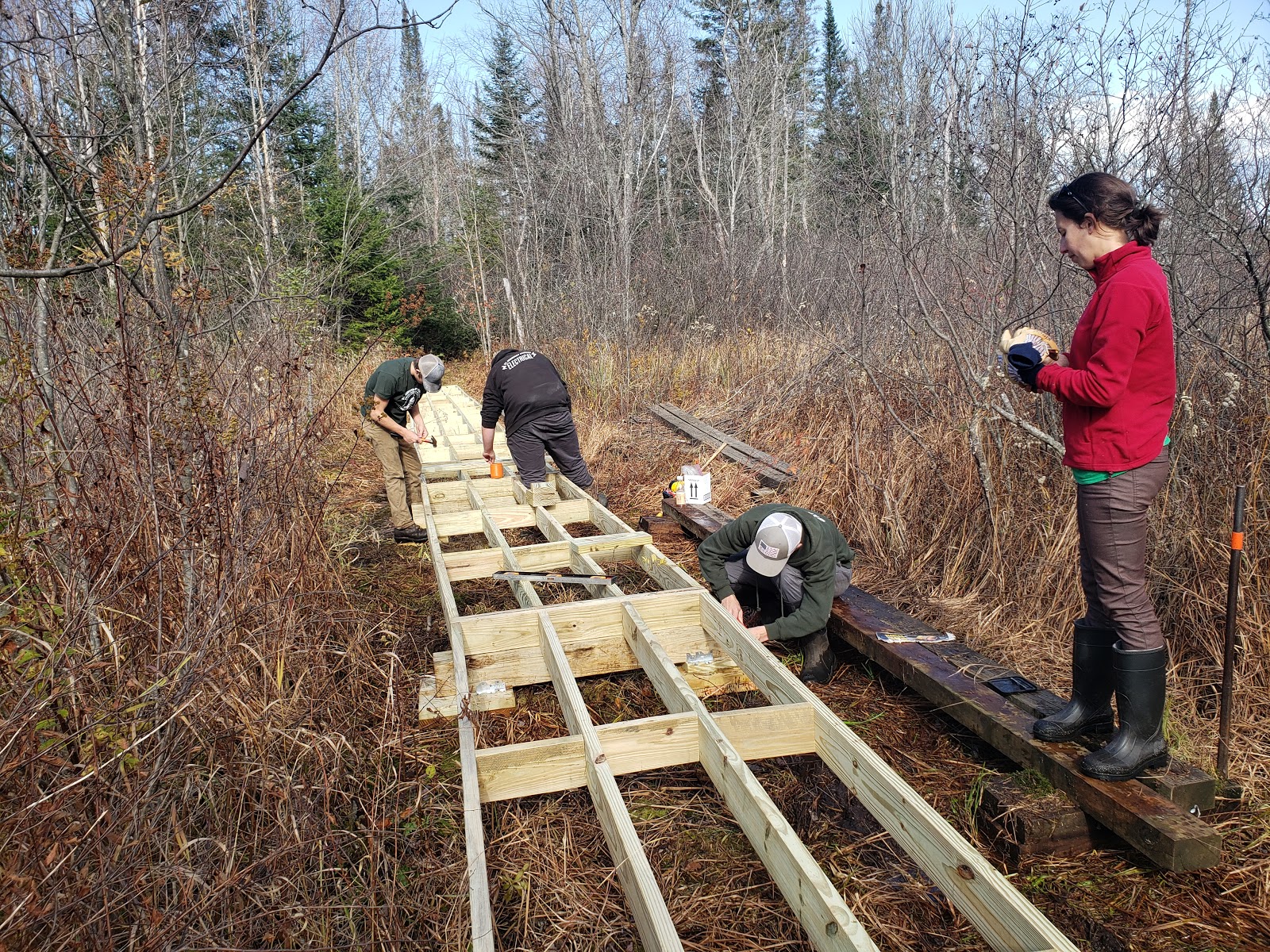
By Jessica Bakowski
Students began researching forests, wildlife, and water resources this week as we began our Natural Resource Management unit. At Hubbard Brook Experimental Forest, students learned the importance of long-term ecosystem monitoring and discussed large scale experiments related to changes in nutrient cycles, phenology, forest health, and bird migration. We discussed evidence and impacts of climate change on forests, including stronger and more frequent rain events, shifts in bird migration, and changes in spring bloom times and leaf-out. Closer to home, we explored resource management at the Victory Basin Wildlife Management Area. Students learned about managing unique habitats that support wildlife in one of the largest unfragmented forest blocks in the state. Unique boreal species, wetland habitat, and deer wintering areas make this an important conservation area. In addition to learning about this unique habitat, students build a handicap accessible boardwalk and viewing area over a frequently visited section of the bog to make the area more accessible and protect the delicate wetland ecosystem from damage caused by visitors.
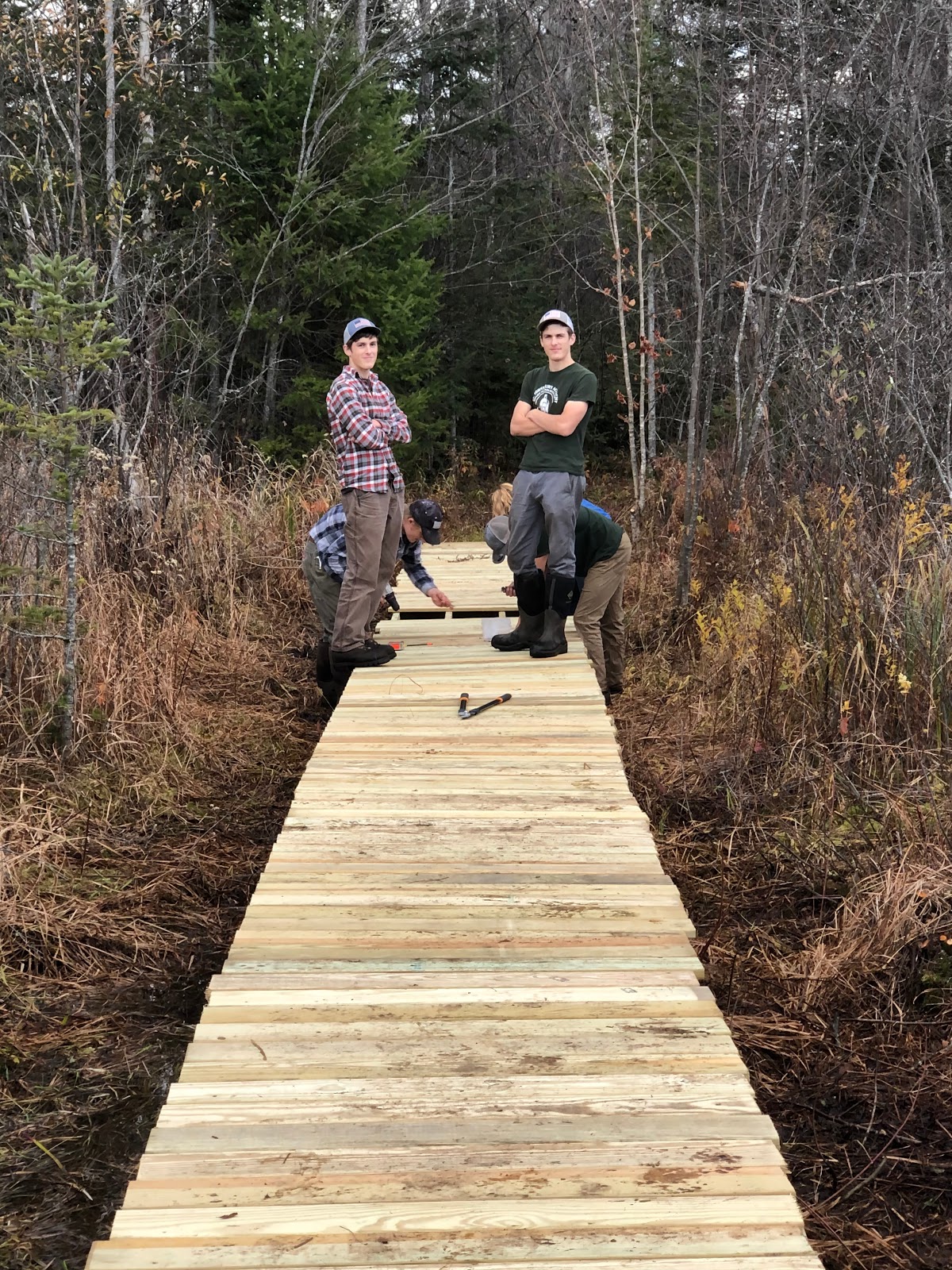
By interacting with our natural environments through activities such as wildlife viewing, timber harvesting, hunting, or fishing, we place value on these resources that can encourage us to protect and conserve these important habitats. Fully appreciating the delicate balance of natural communities through this type of immersion can be a step towards sustainable management and a way to further support these activities and places that we value.
Tuesday, 10/22
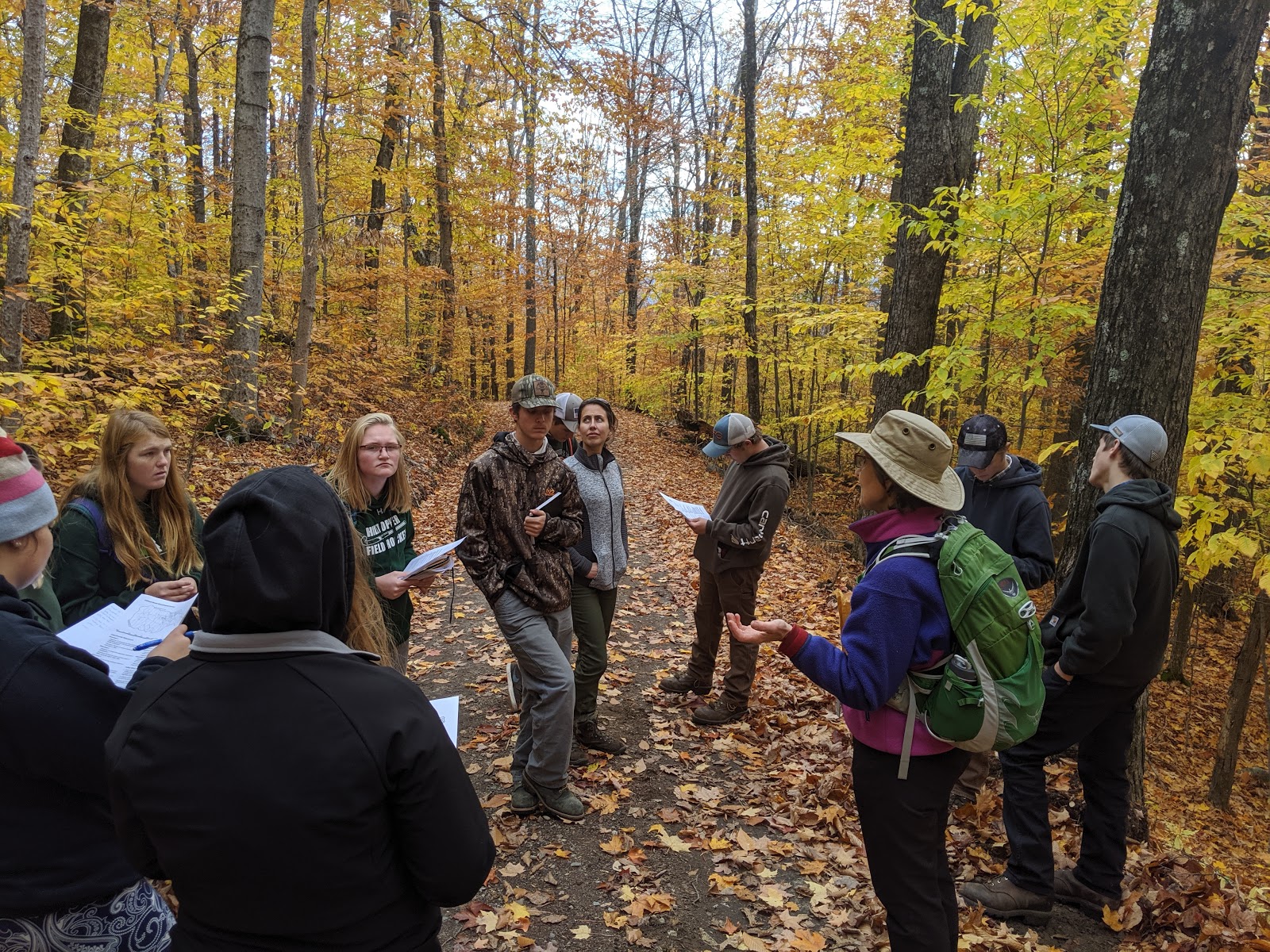
On Tuesday the Field Semester class went to the Hubbard Brook Experimental Forest. Hubbard Brook was started in 1963 and conducts some of the longest ecosystem studies in the world. Scientists utilizing the Hubbard Brook Forest focus on studies of air, water, soil, plants and wildlife, and effects of climate change. It is located on 7,800 acres of Northern hardwood forest near the White Mountains in New Hampshire. One of the biggest experiments that Hubbard Brook focuses on is based on hydrology, specifically how water interacts with the environment when logging is involved. To do this, large parcels of forest were logged in different ways. Some were clear cut, others strip cut, and some not cut. This allows scientists at Hubbard Brook to monitor water flow and erosion in a controlled environment, which helps to inform sustainable forest management guidelines.
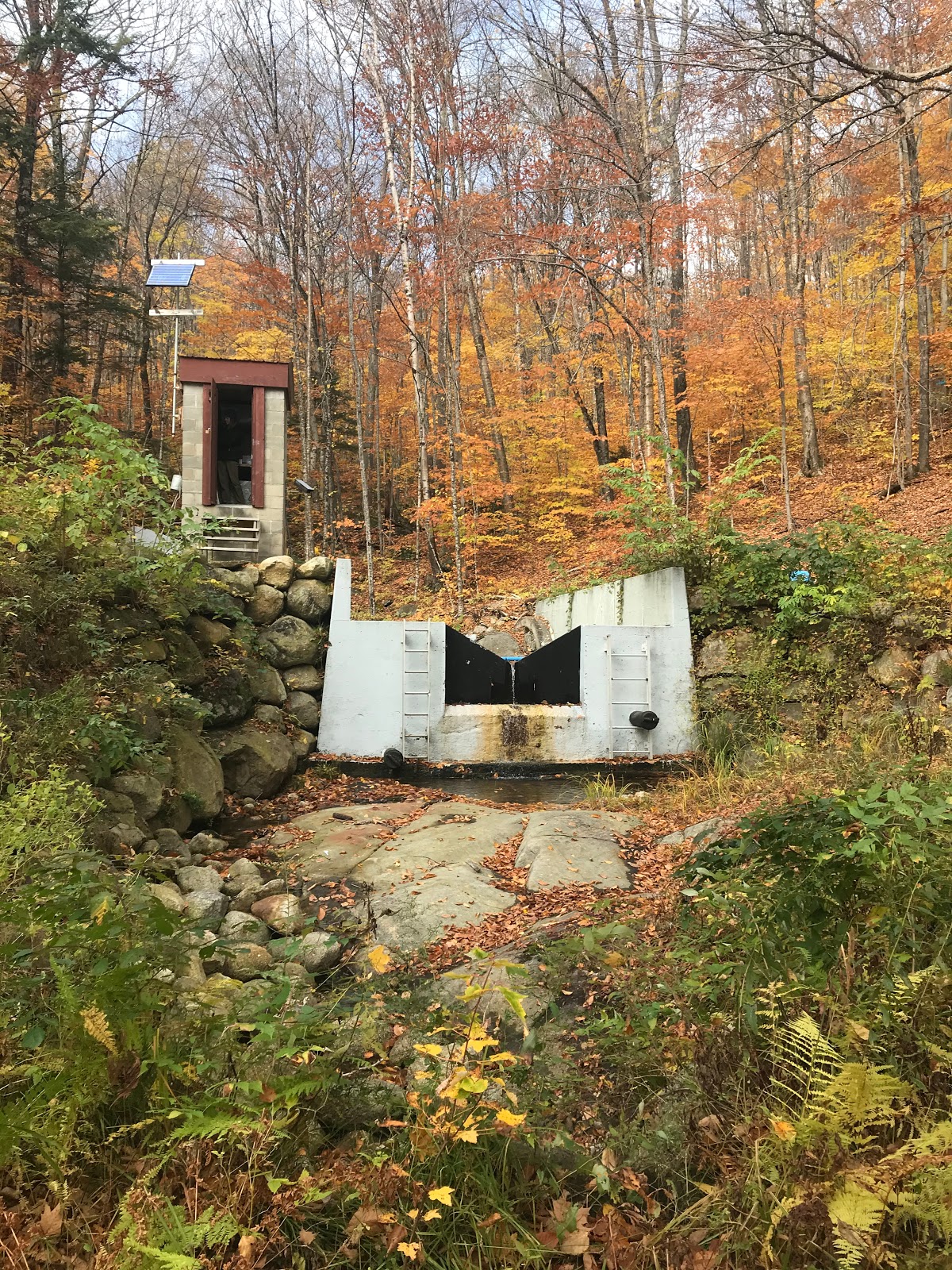
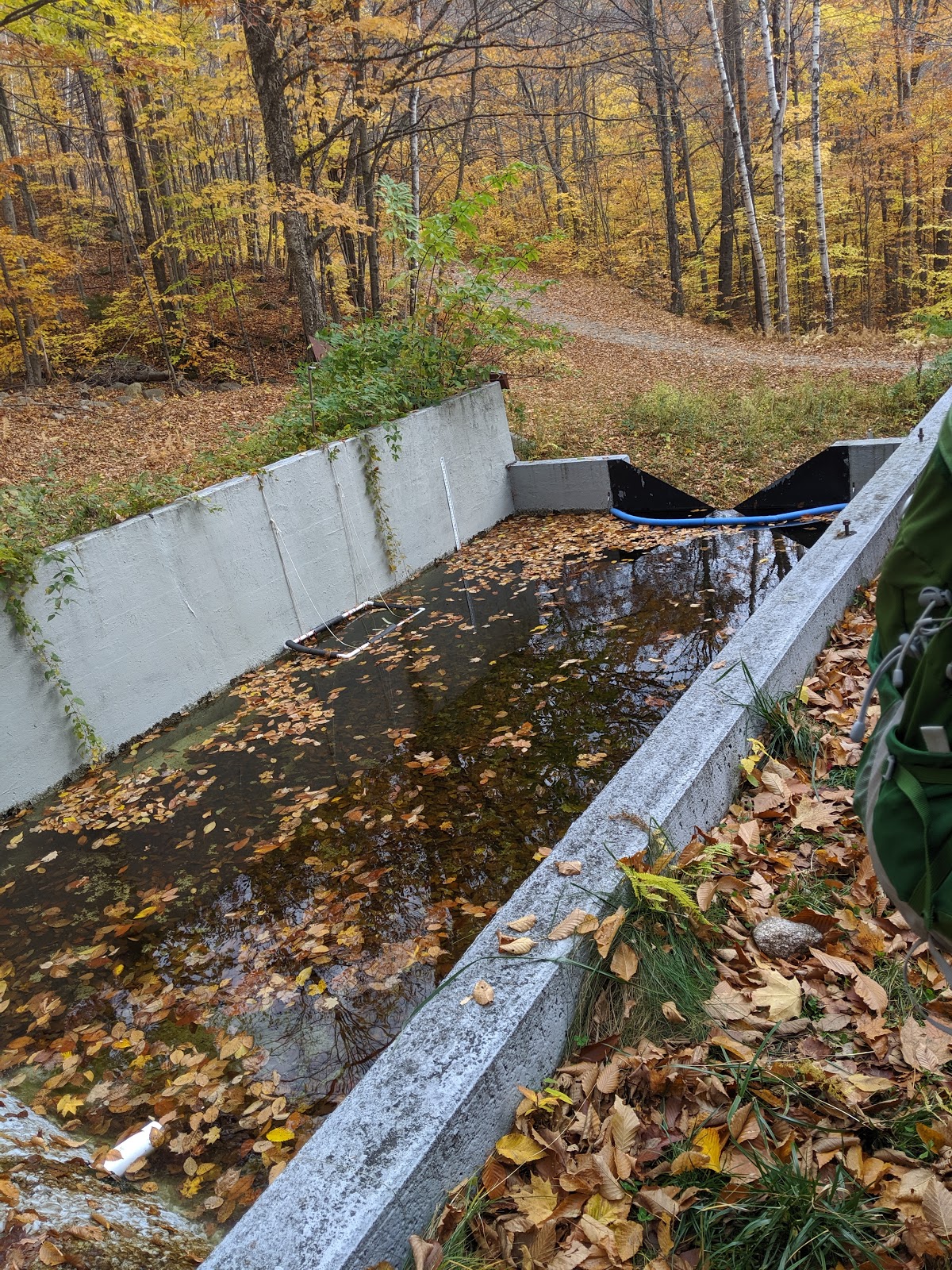
These small concrete dams, known as weirs, measure and regulate water flow in the Hubbard Brook Experimental Forest. Seventeen weirs are located throughout the forest, each at the base of a watershed. The weirs are used to measure how much water comes off the mountains and into the watersheds. They are also used to monitor salamander and fish density and growth. Wildlife is studied in other ways as well. The streams that feed into the weirs have insect traps next to them to help measure insect populations. The tracking of the insects helps them also track correlations in bird migrations and their food sources, the insects. Scientists at Hubbard Brook have found that climate change may be disrupting some bird migration patterns and the phenology of insect emergence and flower blooms.
Wednesday, 10/23

On Wednesday and Thursday our class visited Damon’s Crossing in Victory, VT, which is an old railroad crossing where logs were transported by train back in the late 1800’s. There we met FPR’s Recreational Development Specialist Luke O’Brien. Our goal was to replace an existing “plank walk” with 100’ of new boardwalk on a popular trail that features diverse species of plants and animals like the spruce grouse or rusty blackbird which both are rare birds to find in our region. The boardwalk will make the trail safer, easier, and more sustainable. It will also make the trail handicapped accessible. It’s design is to allow people who are handicapped to come out into the woods and watch birds or just enjoy the view. There is also boarded edges that will make it safer for the handicapped and so that blind people can have something to tap on as they go across the bridge. Luke stated that it existing plank walk didn’t last very long because it wasn’t treated wood. The wood that we used was treated and will last longer in the harsh conditions of a wetland area.
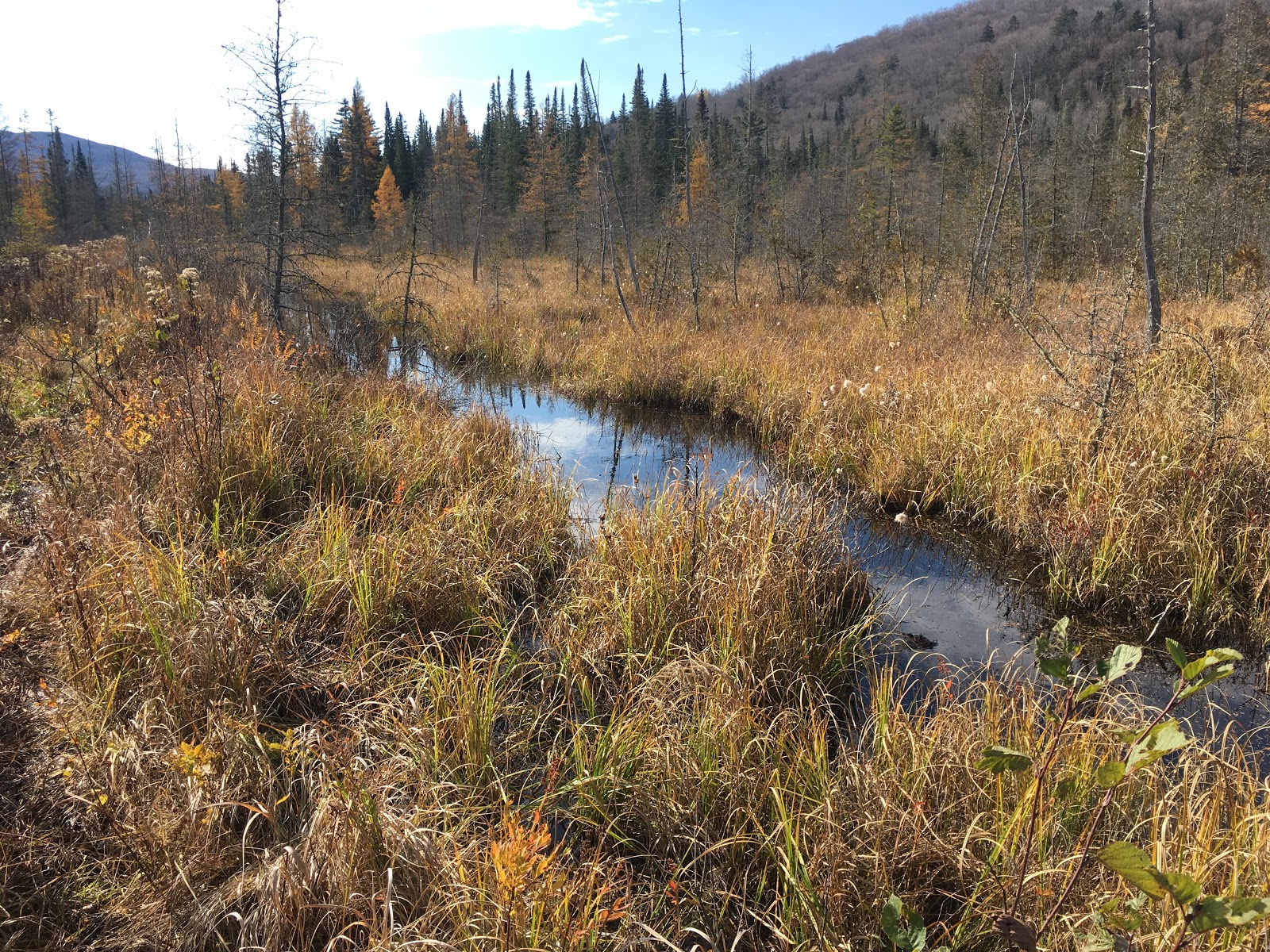
The Victory Management Unit encompasses nearly 24,000 acres of land and is comprised of hardwoods, softwoods, and swamp area. The VMU is managed specifically for wildlife. During the late 1800s through the early 1900s victory was known for logging. The logs were transported out of victory via the railroad, there was a railroad that ran through the swamp just sitting slightly higher than the rest of the area. Some much wood was being pulled out of the Victory Basin that during that time period there was a small town with a general store and house, having a population of roughly 100 people.
Thursday, 10/24
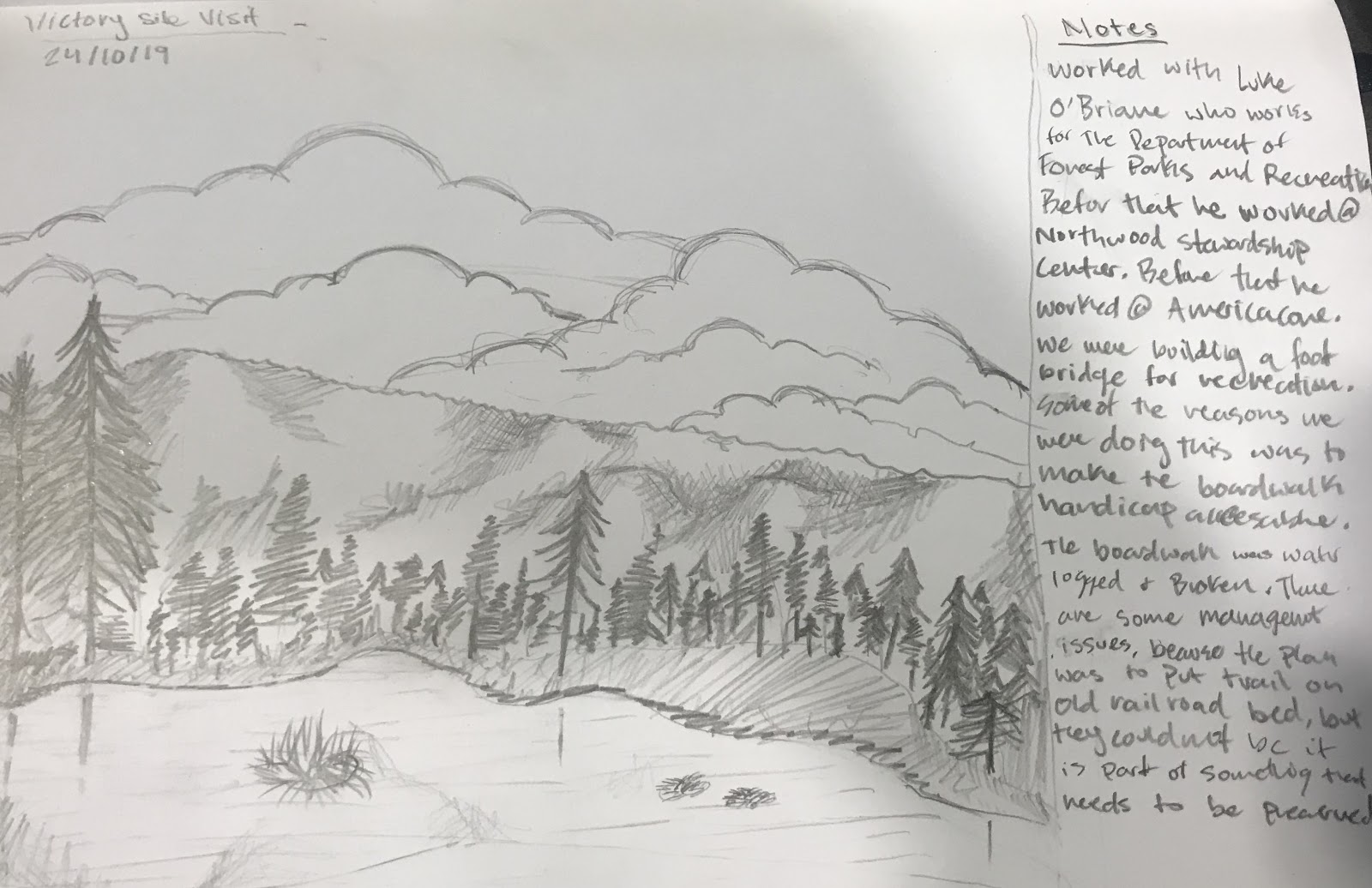
On Thursday we were instructed to go further down the trail at the Victory Management Area and journal everything that we’ve learned and everything that we saw around us. This included the surrounding riparian areas and how critical they are for providing aquatic and terrestrial wildlife habitats and maintaining water quality, the importance of the Northern Hardwood forest types, whether we saw any birds or other wildlife, and if we saw any “snags,” which are standing dead trees or “cavity trees” with a hollow in it. We also wrote about the importance of smaller things on the ecosystem, such as how these dead trees are a critical resource for wildlife, regulate the forest nutrient cycle, put carbon back into the soil, regulate water flow and erosion, and create habitats for fish and other wildlife.

